Abstract
Two experiments investigated the role of an immediate, response-produced auditory stimulus during acquisition, via delayed reinforcement, of a response selected to control for possible unprogrammed, operandum-related sources of response feedback. Experimentally naive rats were exposed to a delayed-food reinforcement condition, specifically a tandem fixed-ratio 1 differential-reinforcement-of-other-behavior 30-s schedule. The response was defined as breaking a photocell beam located near the ceiling at the rear of the operant conditioning chamber. In Experiment 1, rates of photobeam breaking by each rat increased from near zero, regardless of the presence or absence of a tone that immediately followed the response initiating the delay interval. Though not essential, the tone facilitated response acquisition and resulted in more efficient response patterns at stability. Experiment 2 demonstrated that photobeam-breaking response rates under the delayed reinforcement contingency exceeded those in a preceding baseline condition in which no food was delivered. In addition, upon introduction of the delayed reinforcement procedure, correspondence between response patterns and the requirements of the reinforcement schedule increased over baseline levels in the absence of a food contingency. Together with a previous report of Lattal and Gleeson (1990), the present results suggest that response acquisition with delayed reinforcement is a robust phenomenon that may not depend on a mechanically defined response or an immediate external stimulus change to mediate the temporal gap between response and reinforcer.
Full text
PDF
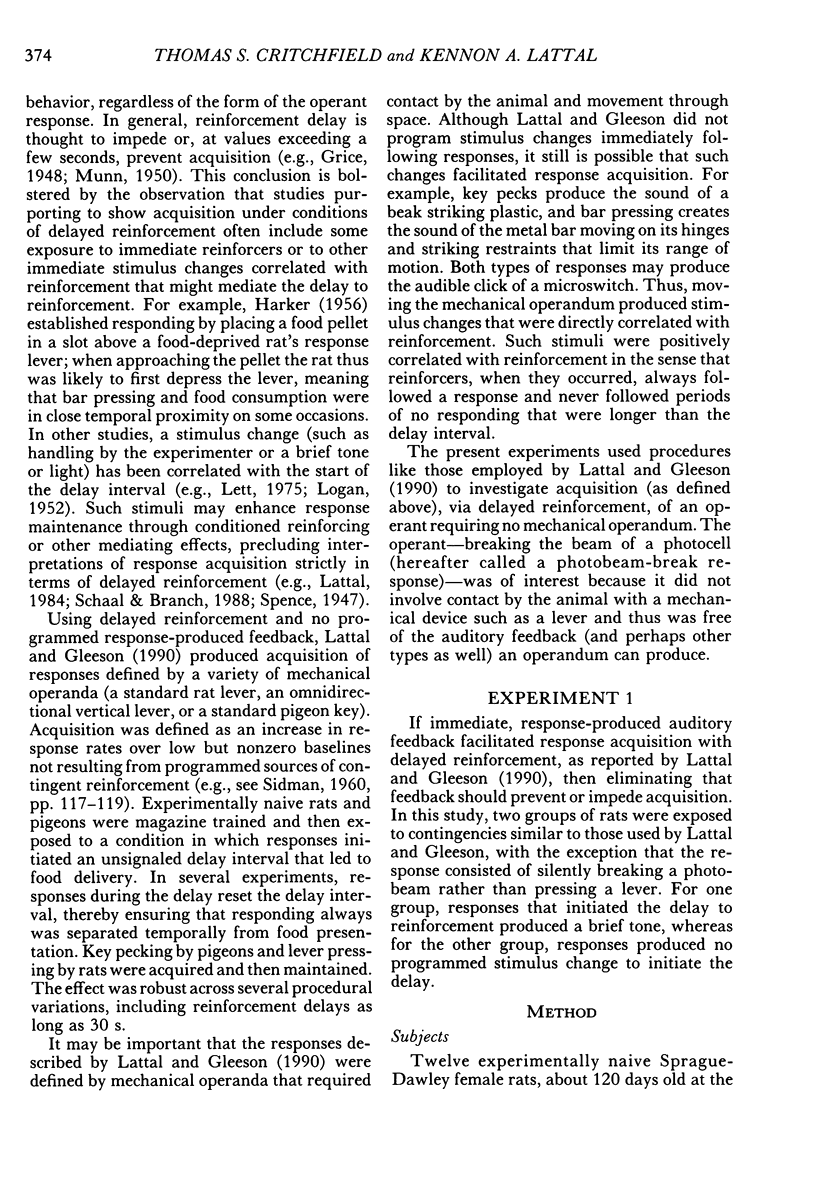
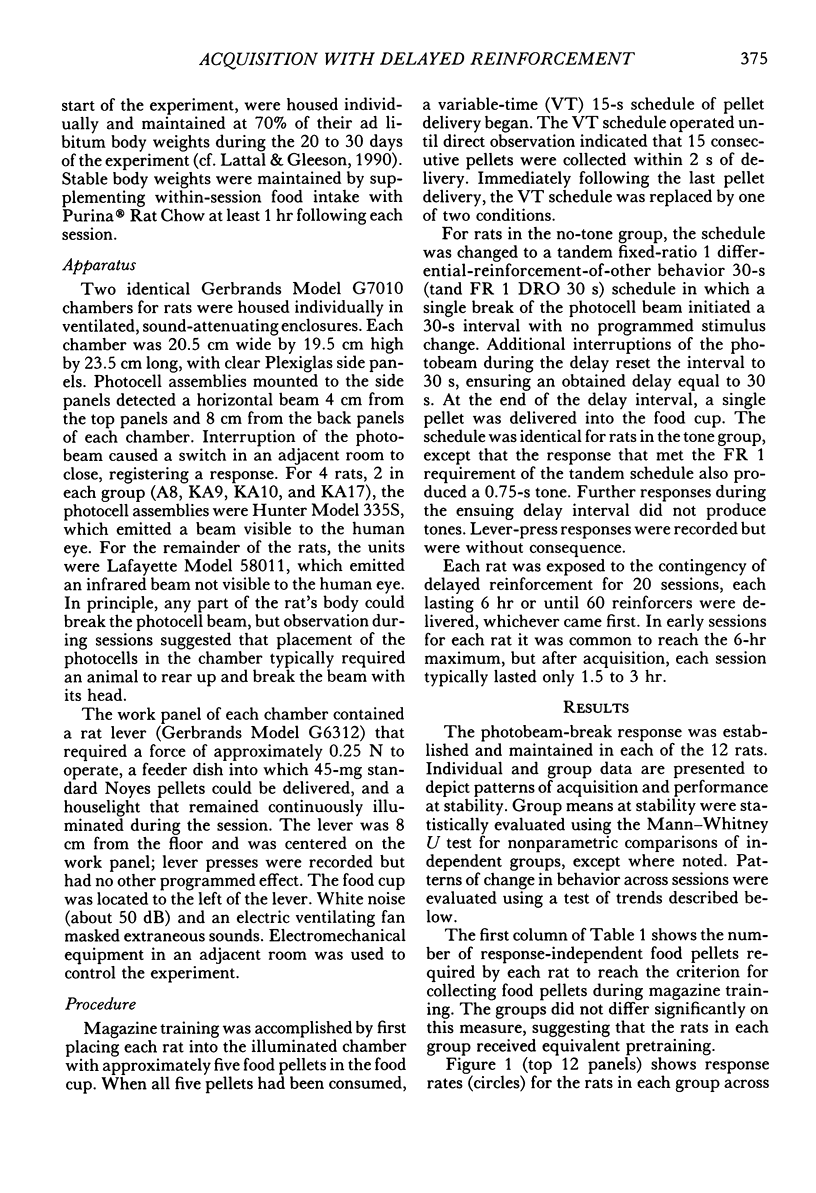

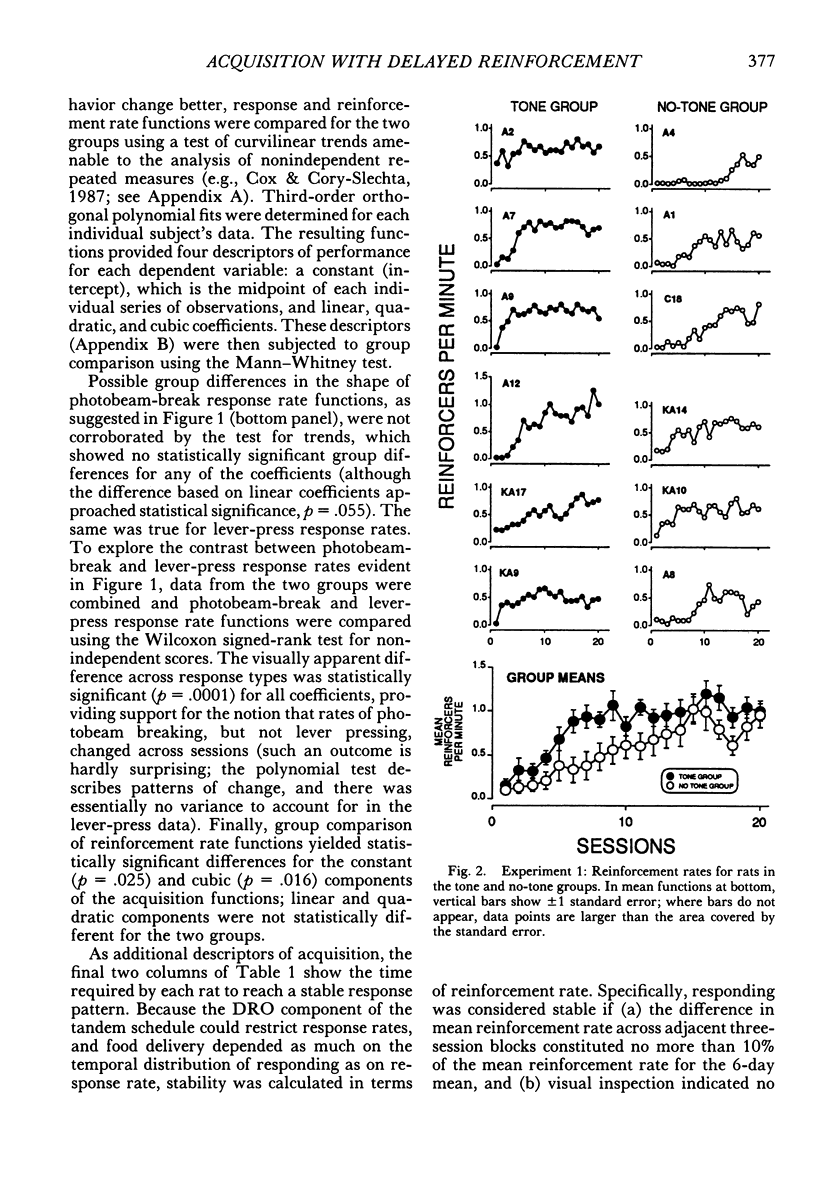
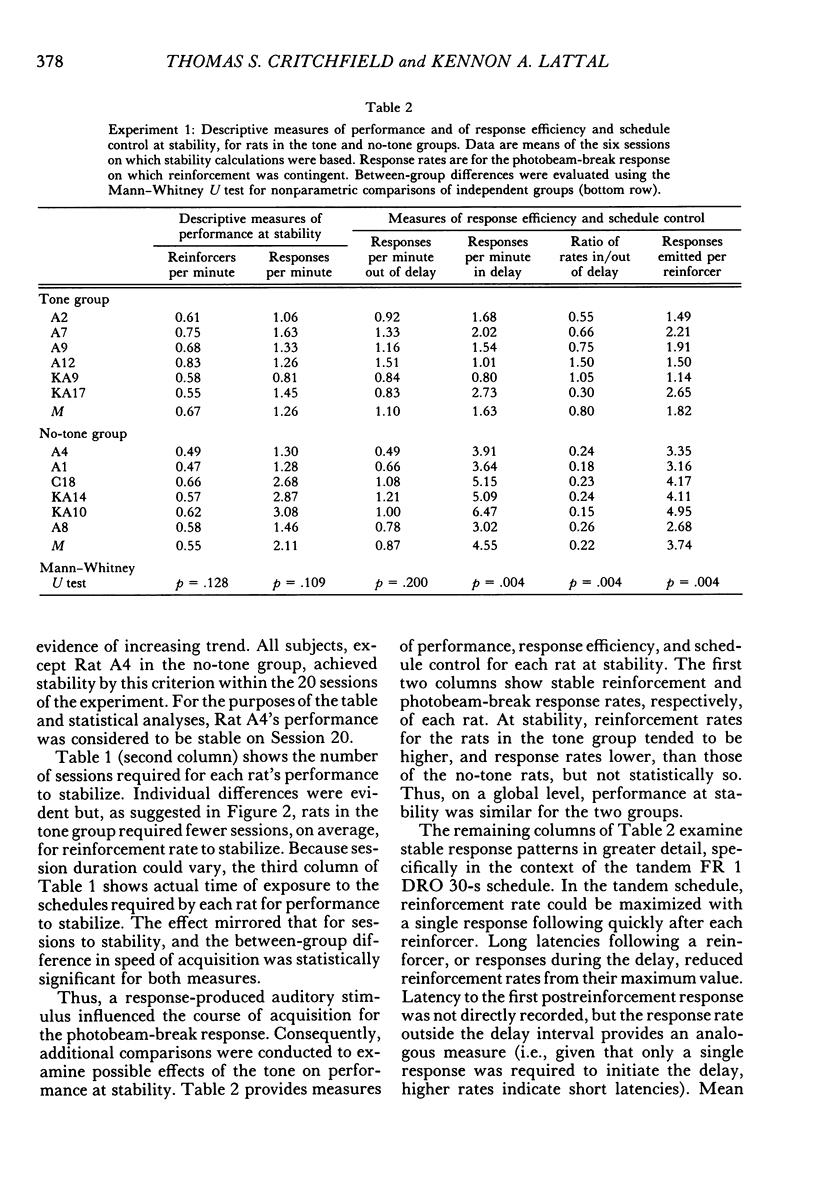




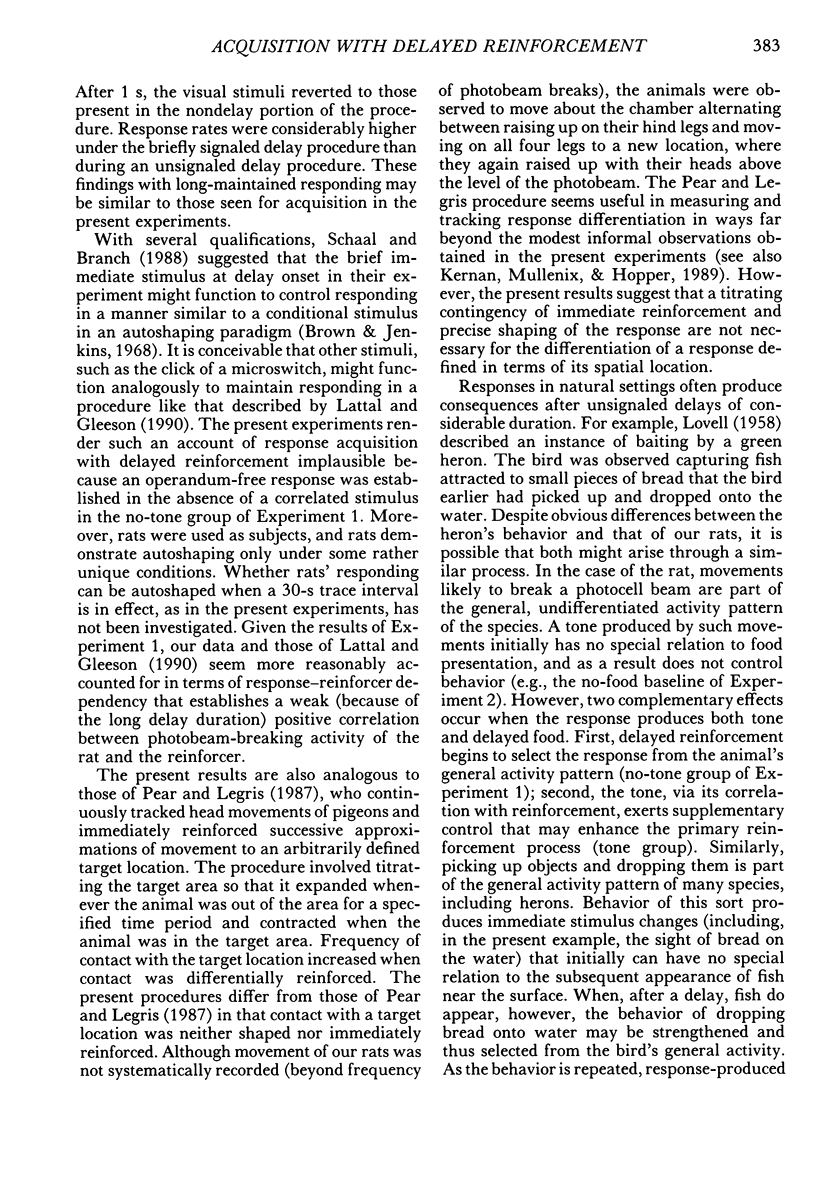


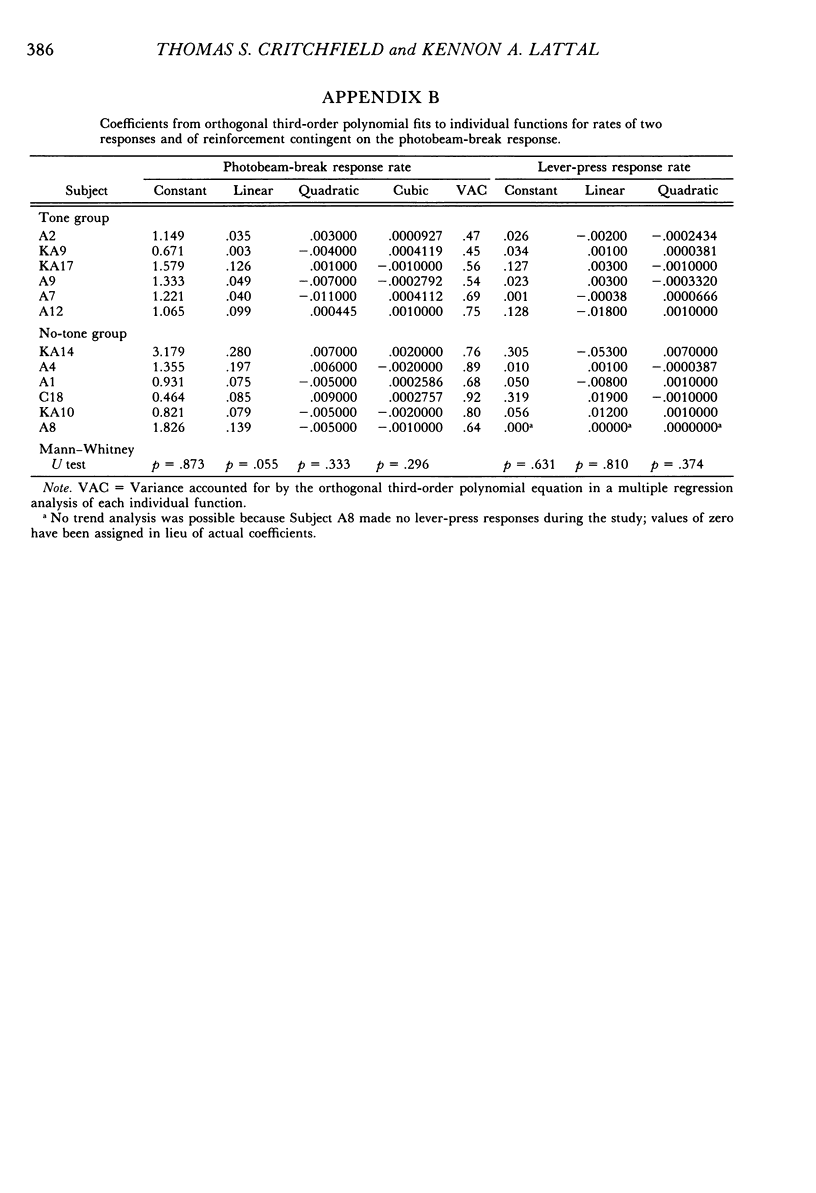
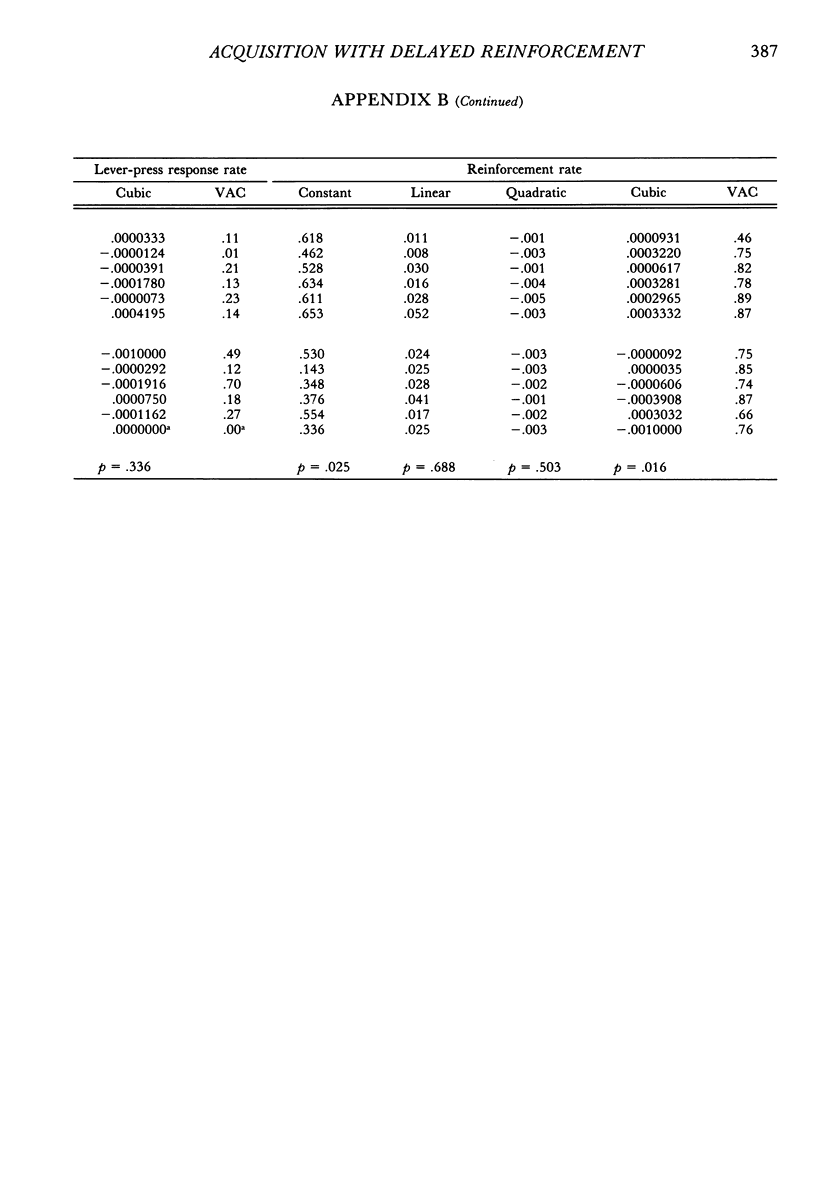
Selected References
These references are in PubMed. This may not be the complete list of references from this article.
- BARNES G. W., BARON A. Stimulus complexity and sensory reinforcement. J Comp Physiol Psychol. 1961 Aug;54:466–469. doi: 10.1037/h0046708. [DOI] [PubMed] [Google Scholar]
- Baum W. M., Rachlin H. C. Choice as time allocation. J Exp Anal Behav. 1969 Nov;12(6):861–874. doi: 10.1901/jeab.1969.12-861. [DOI] [PMC free article] [PubMed] [Google Scholar]
- Brown P. L., Jenkins H. M. Auto-shaping of the pigeon's key-peck. J Exp Anal Behav. 1968 Jan;11(1):1–8. doi: 10.1901/jeab.1968.11-1. [DOI] [PMC free article] [PubMed] [Google Scholar]
- Cox C., Cory-Slechta D. A. Analysis of longitudinal "time series" data in toxicology. Fundam Appl Toxicol. 1987 Feb;8(2):159–169. doi: 10.1016/0272-0590(87)90114-x. [DOI] [PubMed] [Google Scholar]
- DEMBER W. N. Response by the rat to environmental change. J Comp Physiol Psychol. 1956 Feb;49(1):93–95. doi: 10.1037/h0045411. [DOI] [PubMed] [Google Scholar]
- GRAF V., BITTERMAN M. E. General activity as instrumental: application to avoidance training. J Exp Anal Behav. 1963 Apr;6:301–305. doi: 10.1901/jeab.1963.6-301. [DOI] [PMC free article] [PubMed] [Google Scholar]
- HARKER G. S. Delay of reward and performance of an instrumental response. J Exp Psychol. 1956 May;51(5):303–310. doi: 10.1037/h0042073. [DOI] [PubMed] [Google Scholar]
- HEFFERLINE R. F., KEENAN B., HARFORD R. A. Escape and avoidance conditioning in human subjects without their observation of the response. Science. 1959 Nov 13;130(3385):1338–1339. doi: 10.1126/science.130.3385.1338. [DOI] [PubMed] [Google Scholar]
- HOFFMAN H. S., FLESHLER M. Aversive control with the pigeon. J Exp Anal Behav. 1959 Jul;2:213–218. doi: 10.1901/jeab.1959.2-213. [DOI] [PMC free article] [PubMed] [Google Scholar]
- Kernan W. J., Jr, Mullenix P. J., Hopper D. L. Time structure analysis of behavioral acts using a computer pattern recognition system. Pharmacol Biochem Behav. 1989 Dec;34(4):863–869. doi: 10.1016/0091-3057(89)90286-4. [DOI] [PubMed] [Google Scholar]
- LOGAN F. A. The role of delay of reinforcement in determining reaction potential. J Exp Psychol. 1952 Jun;43(6):393–399. doi: 10.1037/h0063496. [DOI] [PubMed] [Google Scholar]
- Lattal K. A., Gleeson S. Response acquisition with delayed reinforcement. J Exp Psychol Anim Behav Process. 1990 Jan;16(1):27–39. [PubMed] [Google Scholar]
- Lattal K. A. Signal functions in delayed reinforcement. J Exp Anal Behav. 1984 Sep;42(2):239–253. doi: 10.1901/jeab.1984.42-239. [DOI] [PMC free article] [PubMed] [Google Scholar]
- MONTGOMERY K. C. Exploratory behavior as a function of similarity of stimulus situations. J Comp Physiol Psychol. 1953 Apr;46(2):129–133. doi: 10.1037/h0055101. [DOI] [PubMed] [Google Scholar]
- Nissen H. W. "Freezing" Behavior in Rats. Science. 1946 Jan 4;103(2662):27–27. doi: 10.1126/science.103.2662.27. [DOI] [PubMed] [Google Scholar]
- Pear J. J., Legris J. A. Shaping by automated tracking of an arbitrary operant response. J Exp Anal Behav. 1987 Mar;47(2):241–247. doi: 10.1901/jeab.1987.47-241. [DOI] [PMC free article] [PubMed] [Google Scholar]
- Schaal D. W., Branch M. N. Responding of pigeons under variable-interval schedules of unsignaled, briefly signaled, and completely signaled delays to reinforcement. J Exp Anal Behav. 1988 Jul;50(1):33–54. doi: 10.1901/jeab.1988.50-33. [DOI] [PMC free article] [PubMed] [Google Scholar]
- Schwartz B. Development of complex, stereotyped behavior in pigeons. J Exp Anal Behav. 1980 Mar;33(2):153–166. doi: 10.1901/jeab.1980.33-153. [DOI] [PMC free article] [PubMed] [Google Scholar]
- Skinner B. F., Morse W. H. Fixed-interval reinforcement of running in a wheel. J Exp Anal Behav. 1958 Oct;1(4):371–379. doi: 10.1901/jeab.1958.1-371. [DOI] [PMC free article] [PubMed] [Google Scholar]


